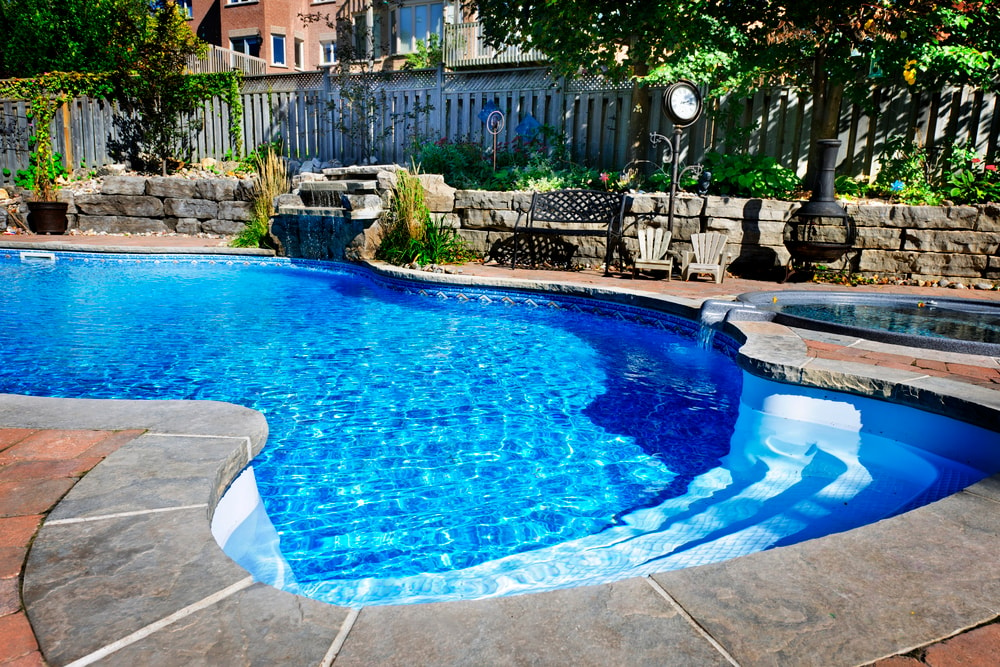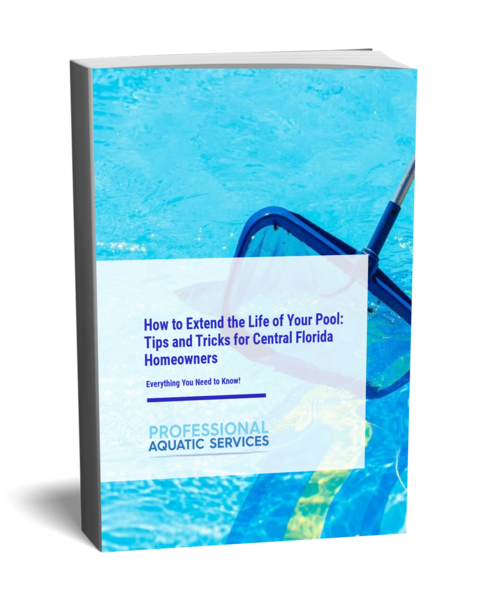In Florida’s heat and humidity, running your pool pump the right amount each day isn’t just helpful—it’s essential. Too little, and you risk algae, cloudy water, and chemical imbalances. Too much, and you’re wasting energy and wearing out your equipment. Many homeowners aren’t sure how long is too long or not long enough. While skipping a day or two might not cause immediate damage, poor circulation over time leads to bigger issues. The good news? You can find the sweet spot.
This guide helps Florida pool owners keep water clean, protect equipment, and save on energy, without the guesswork.
Why Daily Pool Pump Circulation Matters
Like your home’s air conditioning, your pool pump works best with regular, steady use, mainly in Florida’s heat. When your pump runs daily, it pushes water through the filter system, removes debris, and keeps chemicals balanced. Skipping days allows algae, bacteria, and cloudy water to take over quickly in warmer climates.
Consistent pool pump run time—at least eight hours a day—helps complete a full turnover cycle, meaning all the water passes through the filter. This is key during peak swimming season when more people use the pool and the sun breaks down chlorine faster.
Letting the pump rest too long leads to a buildup in filters, salt systems, and heaters, putting more strain on your equipment. It also costs more in the long run with extra maintenance and chemical use.
Daily circulation keeps your pool clean, protects your investment, and can even save energy when timed outside of peak hours. It’s one habit that pays off.
Key Factors That Affect How Long to Run Your Pool Pump
Your daily pool pump run time depends on more than just how hot it is outside. To keep your pool clean and energy costs down, you need to consider pool size, water volume, sun exposure, and how much your pool gets used, especially during Florida’s long swimming season.
Pool Size & Water Volume

Larger pools require more power and time to filter. To estimate how much water your pool holds:
- Rectangular pool: Length × Width × Average Depth × 7.5
- Oval pool: Length × Width × Average Depth × 6.7
- Round pool: Diameter × Diameter × Average Depth × 5.9
Once you know your pool’s gallons, figure out your flow rate—how much water your pump moves per minute. You can find this on your pump label or calculate it:
Flow Rate (GPM) = Total Gallons ÷ Desired Hours ÷ 60
For example, if your pool holds 15,000 gallons and you want full turnover in 8 hours:
15,000 ÷ 8 ÷ 60 = 31.25 GPM
Then, use this to check if your pump can complete a full turnover cycle daily. If it can’t, your pump may need to run more hours straight or be upgraded to a more efficient model.
Florida Sun & Heat Index
Florida’s intense sun speeds up chlorine breakdown. If your pool sits in direct sunlight, you’ll need more filtration to keep the water balanced. Running your pump during daylight—especially during non-peak hours—helps maintain clean water and avoids more strain on your system.
Bather Load & Organic Debris
More swimmers mean more contaminants like sunscreen and sweat. Add falling leaves and pollen, and your filter system works overtime. This is why running your pool pump at least eight hours per day is essential to maintain water clarity and safe pool care.
General Pool Pump Runtime Guidelines
To keep your pool pump running efficiently, you’ll want to follow a consistent daily schedule—especially in Florida’s heat. Here’s what works best for most swimming pools:
- Run your pump 8 to 12 hours per day.
This ensures one full turnover of your pool water, which helps your filter remove debris and keeps water chemistry stable. - Use the “one full turnover per day” rule.
Your pool pump’s purpose is to cycle all the water at least once every 24 hours. If water sits too long, algae and bacteria can build up quickly, especially during Florida’s long swimming season. - Split the runtime for better energy use.
Run the pump 6 hours in the morning and 4 hours in the late afternoon or early evening. This avoids peak hours when electricity costs more and helps you save money while still keeping the pump running long enough to do its job. Use a timer to simplify scheduling.
Saving Energy Without Sacrificing Water Quality
Running your pool pump every day is important, but that doesn’t mean it has to run up your electric bill. The key is to keep the pump running long enough for a full turnover while using tools that help lower energy use.
Start by using a programmable timer or smart controller. This lets you schedule your pool pump’s purpose—circulating and cleaning water—during the most efficient times of day. Most electric providers charge less during off-peak hours, which are often early morning, late afternoon, or overnight.
If you’re looking to cut costs even more, consider installing a variable-speed pump. A new pump with adjustable settings uses less power while maintaining water flow. It costs more upfront but pays off over time with lower electricity use.
Warning Signs You’re Not Running the Pump Enough
Not sure if your pool pump is doing its job? Watch for these issues:
- Water turning cloudy or green
- Unstable chlorine or pH levels
- Debris collecting on the surface or bottom
- Filter pressure that’s higher than normal
These signs show your pool isn’t getting enough circulation.
Florida-Specific Tips for Year-Round Pool Pump Use
In Florida, you use your swimming pool nearly year-round, but your pump run time doesn’t need to stay the same every season.
- Reduce pump run time to 4–6 hours per day during cooler months, but keep it running daily to maintain circulation and prevent algae growth. Never shut it off completely, even in winter.
- Watch for added debris during storms and heavy rain.
- Keep water levels high enough so the pump doesn’t run dry.
Staying consistent with seasonal care keeps your water clean and your costs lower.
What If You Don’t Run Your Pump at All?
If you stop running your pool pump completely, water circulation stops—fast. Without daily movement, chlorine can’t do its job, and debris settles. This creates the perfect conditions for algae, cloudy water, and unsafe swimming. Skipping daily runtime is not the same as dealing with a power outage or equipment issue.
If you’re facing a temporary pump failure, learn how to protect your pool in our guide on running a pool without a pump. Even if peak hours vary, daily circulation still matters. A few consecutive hours each day make all the difference.
Run Your Pool Pump Right—Even in Florida’s Heat
Keeping your pool pump running at the right level each day is key to maintaining clean, safe water, especially in Florida’s heat and humidity. Daily circulation supports water clarity, chemical balance, and the long-term performance of equipment. Whether it’s summer or a cooler month, adjusting your pump schedule around usage, weather, and energy rates helps lower costs without sacrificing water quality.
If you’re unsure how long to run your pool pump or need help with setup, Professional Aquatic Services offers expert advice and service across Florida. From routine maintenance to troubleshooting, we help homeowners keep their pools clean, efficient, and ready for swimming all year round.
Frequently Asked Questions (FAQs)
Most Florida pools need the pump running 8 to 12 hours a day, especially during in summer. This allows for a full turnover, keeping the water clean and properly filtered.
Yes, running your pool pump at night during off-peak hours can lower your electric bill—if your utility company offers time-of-use rates. Just make sure the full turnover still happens each day.
Lorem ips
Yes, but for less time. In cooler months, 4 to 6 hours may be enough since algae growth and chlorine breakdown slow down. Always adjust based on water clarity and temperature.
um dolor sit amet, consectetur adipiscing elit. Ut elit tellus, luctus nec ullamcorper mattis, pulvinar dapibus leo.
Running the pump too little prevents proper water circulation. This can lead to water that is cloudy and algae growth, and higher chemical costs due to poor distribution.
Not necessarily, but it’s often unnecessary. Continuous pump running adds wear and increases energy costs. A properly sized pool pump should clean your pool with one full turnover daily—without running all day.

